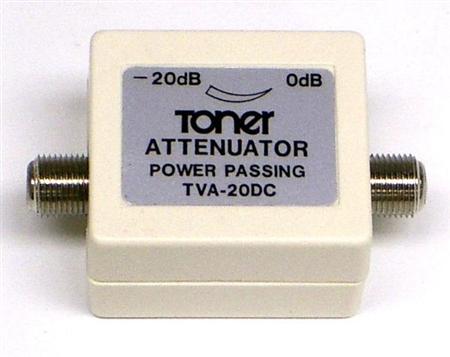There’s no end to the arcane products you’ll find in the serious antenna enthusiast’s toolbox. One of the least expensive is the lowly attenuator. Attentuators are less common now than they used to be, and generally less useful than you would expect. But, they’re still needed sometimes. Solid Signal specializes in helping you find those really rare parts, especially if you’re looking for something that’s well-made.
What is an attenuator?
An attenuator is really nothing more than a volume control. They come in variable ones, which inevitably have a respectable “old-school” look to them, or fixed ones, which look like the ends of cables. They serve a specific purpose and when you need one, you’ll be glad you have it.
Fixed attenuators
Fixed attenuators are also called “pads” and that’s what they do. They dampen, lower, or “pad” the signal by a fixed amount. They’re common in commercial scenarios, a little less so in homes.
Variable attenuators
Variable attenuators have always been the home enthusiast’s “go-to” attenuator. Most folks don’t have expensive signal meters. They’ll read an article like this and realize they need an attenuator. They won’t know how much they need to attenuate, so they’ll buy a variable one and keep trying until it’s right. That’s s tried-and-true DIY methodology. Nothing wrong with that.
What does an attenuator do?
The purpose of an attenuator is to keep a certain amount of signal from passing through. While rural and distant antenna users erect ever-larger arrays to pull in super-weak, distant signals, city and suburban dwellers often have more signal than they need. While the hobbyist with a giant aerial antenna may scoff, those close to the towers may find that stray signals are ruining their viewing experiences.
Too much signal can cause ghosted images or a wide variety of other problems. A very strong signal can bounce off nearby buildings, interfering with the stronger primary signal and creating what is called “multipath interference.” This continues to be a problem, even with digital signals.
If you suspect that you’ve got too much signal, an attenuator can help you by reducing the amount of signal that travels through the line. Attenuators aren’t just for antennas, though. Attenuators work with satellite amplifiers to guarantee that “just enough” signal gets through. Overamplified signals can cause distortion that can overload a satellite receiver’s tuners. It’s very common to use one if you’re putting just one TV very close to an amplifier.
The point of an attenuator is that it lets some signal through, just not all of it. An attenuator that stops all signal from getting through is more properly called a filter or a trap. You’ll use a filter for a variety of reasons, such as limiting amplification to one part of the spectrum while leaving another untouched, or allowing two antennas to happily coexist.
Do you need an attenuator?
Chances are you don’t. Modern amplified antennas will automatically cut signals that are too high, and you probably don’t need an attenuator at all unless you’re literally right next door to a broadcast tower. (Which, as someone who used to live next to a broadcast tower and just a mile from others, I can tell you is a real thing.)
But, if you do need an attenuator, you should get quality ones like the ones you’ll find when you shop at Solid Signal.




